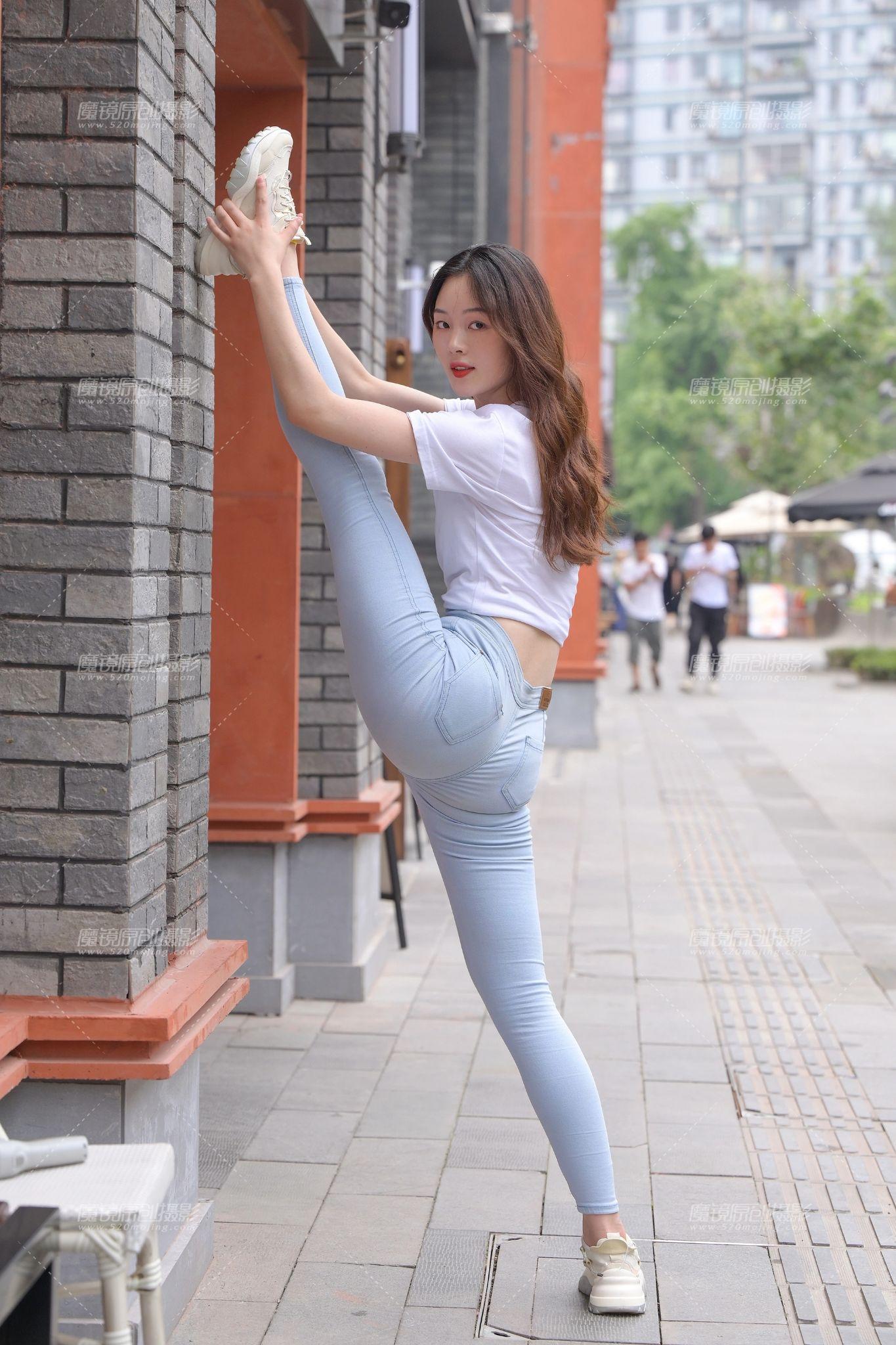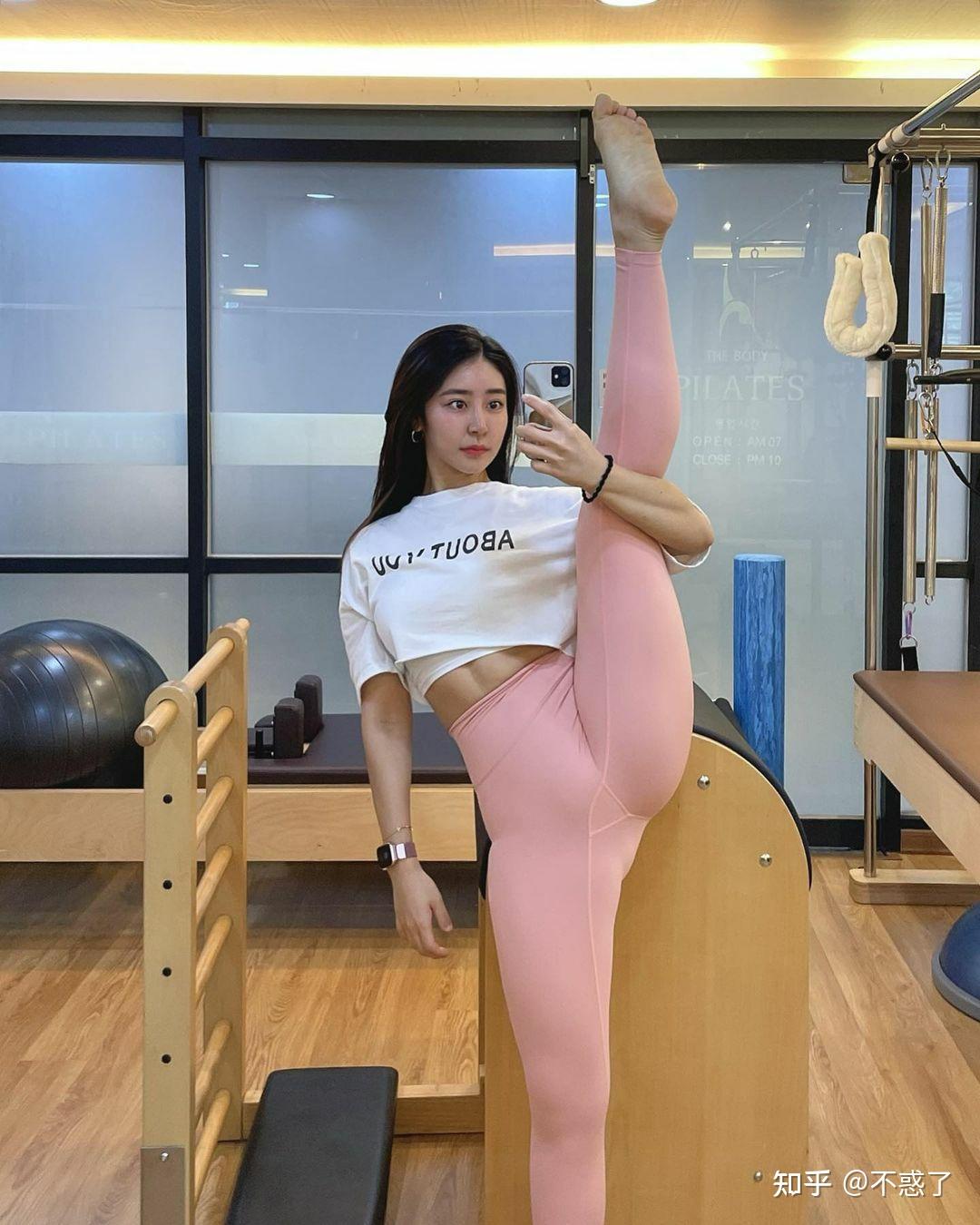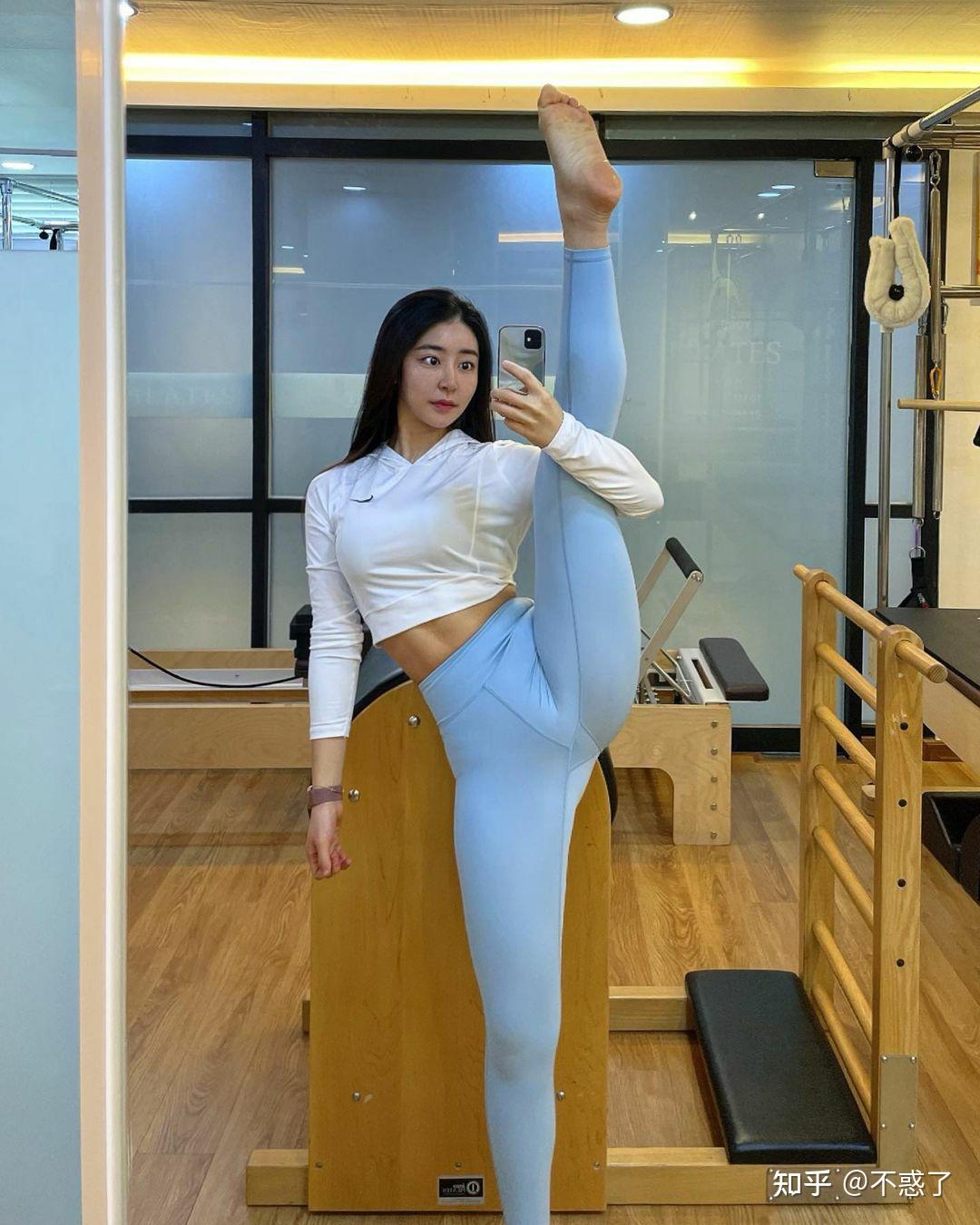Unlocking Child Potential: The "Xiao Bao Yi Zi Ma" Phenomenon
In the vibrant tapestry of global physical culture, few sights captivate and inspire quite like a young child effortlessly performing a full split. This remarkable display of flexibility and discipline has found its unique expression in the Chinese term "小 宝 一 字 马" (Xiǎo Bǎo Yī Zì Mǎ). It's more than just a phrase; it encapsulates the awe, the aspiration, and sometimes, the concern surrounding early childhood athletic prowess. As parents, educators, and enthusiasts, understanding this phenomenon requires a deeper dive into its meaning, its implications, and the delicate balance between nurturing talent and ensuring well-being.
The concept of "小 宝 一 字 马" brings to mind images of tiny bodies demonstrating incredible elasticity, often seen in viral videos or early training academies. While undeniably impressive, it also sparks conversations about the appropriate age for intensive training, the safety of such practices, and the long-term impact on a child's physical and psychological development. This article aims to explore the multifaceted world of "小 宝 一 字 马," dissecting its linguistic roots, examining the science behind early flexibility, and offering guidance for navigating this fascinating yet complex aspect of childhood.
Understanding "小 宝 一 字 马": More Than Just a Split
To truly grasp the essence of "小 宝 一 字 马," we must first break down its components. The term is a beautiful blend of affectionate address and precise physical description. "小 宝" (Xiǎo Bǎo) literally translates to "little treasure" or "baby," an endearing term often used for young children. This immediately sets a tone of cherishment and preciousness, highlighting the youth of the individuals performing these feats. "一 字 马" (Yī Zì Mǎ) is the Chinese term for a split, specifically referring to the body position resembling the Chinese character "一" (yī), which is a horizontal line, when performed. Together, "小 宝 一 字 马" evokes the image of a beloved child achieving an impressive and visually striking display of flexibility.
Deconstructing "小" (Xiao): A Linguistic Deep Dive
The character "小" (xiǎo) is fundamental to understanding "小 宝 一 字 马." As a primary Chinese character, "小" (xiǎo) carries a rich semantic load. Its earliest appearance in oracle bone script signifies fine, granular particles like sand, which then evolved to mean "microscopic" or "tiny." From this core meaning, it extends to "small," "little," and "brief" (as in "小憩" - xiǎoqì, a brief rest). More pertinently to our discussion, "小" also denotes "young" or "youthful," as seen in terms like "小孩" (xiǎohái - child) or "小狗" (xiǎogǒu - puppy). In a cultural context, "小" can also be used as a humble self-reference or to denote something humble or minor. The character's simplicity (just three strokes) belies its profound and versatile usage in the Chinese language. Its pronunciation is "xiǎo," and it's a character that embodies humility, youth, and minuteness, all of which resonate with the image of a "小 宝" performing a split.
The English translations for "小" include "small," "little," "tiny," "young," and "few." This versatility allows for a nuanced understanding of "小 宝," not just as a physically small individual, but as someone young, perhaps even precocious, in their abilities. The linguistic depth of "小" adds a layer of tenderness and wonder to the entire phrase of "小 宝 一 字 马," emphasizing the child's tender age and the remarkable nature of their achievement.
The Cultural Significance of "一 字 马" (Yi Zi Ma)
Beyond the literal translation, "一 字 马" holds significant cultural weight, particularly in disciplines like traditional Chinese opera, martial arts, and dance. The ability to perform a split is often seen as a foundational skill, indicative of discipline, dedication, and physical mastery. It's a testament to rigorous training and an embodiment of grace and strength. In many Asian cultures, flexibility is highly valued in performing arts and sports, often being introduced at a very young age. Therefore, a "小 宝 一 字 马" is not just a random act of flexibility; it often represents the early stages of a disciplined path, whether in gymnastics, ballet, martial arts, or other performance arts. The widespread sharing of such images and videos online further amplifies this cultural appreciation, turning individual achievements into collective inspiration, and sometimes, a source of competitive pressure.
The Science of Flexibility in Early Childhood
Children are naturally more flexible than adults, a biological advantage stemming from several factors. Their bones are not yet fully ossified, meaning they have more cartilage and softer growth plates. Their ligaments and tendons are also more elastic and pliable. This inherent flexibility makes it easier for them to achieve ranges of motion that would be challenging, if not impossible, for adults. However, this natural advantage also comes with a caveat: their developing bodies are more susceptible to injury if proper care and technique are not observed.
The peak window for developing flexibility is generally considered to be during early childhood and pre-adolescence. This is when the body's connective tissues are most adaptable. However, it's crucial to distinguish between natural flexibility and forced flexibility. While gentle stretching can maintain and improve a child's natural range of motion, aggressive or unsupervised stretching can lead to micro-tears in muscles, ligaments, and tendons, potentially causing long-term damage to growth plates and joints. Understanding this delicate balance is paramount for anyone involved in a child's physical development, especially when pursuing impressive feats like the "小 宝 一 字 马."
Benefits of Early Flexibility Training (with Caution)
When approached responsibly, early flexibility training can offer numerous benefits beyond just the ability to perform a "小 宝 一 字 马."
- Improved Physical Literacy: Enhanced flexibility contributes to better overall physical literacy, improving balance, coordination, and agility.
- Injury Prevention: A good range of motion can help prevent injuries in sports and daily activities by allowing muscles and joints to move through their full, natural extent without strain.
- Enhanced Performance: For children interested in dance, gymnastics, martial arts, or other sports, flexibility is a critical component for executing complex movements and techniques safely and effectively.
- Body Awareness: Learning about one's body and its capabilities fosters greater self-awareness and control.
- Discipline and Patience: Consistent stretching requires discipline, patience, and a long-term commitment, valuable life skills that extend beyond physical training.
- Confidence Boost: Achieving physical milestones, like mastering a "小 宝 一 字 马," can significantly boost a child's self-esteem and confidence.
However, these benefits are contingent on a cautious and informed approach. The emphasis should always be on healthy development, not just on achieving specific, visually impressive poses.
Risks and Safety: Prioritizing Child Well-being
While the image of a "小 宝 一 字 马" is captivating, it's vital to address the potential risks associated with intensive or improper flexibility training in young children. The developing musculoskeletal system of a child is not merely a smaller version of an adult's; it has unique vulnerabilities.
- Growth Plate Injuries: Growth plates (epiphyseal plates) are areas of cartilage at the ends of long bones where growth occurs. They are softer and more susceptible to injury than mature bone. Excessive force or improper stretching can damage these plates, potentially leading to growth disturbances or deformities.
- Ligament and Tendon Damage: While children's ligaments and tendons are more elastic, they can still be overstretched or torn, leading to instability or chronic pain.
- Hypermobility: While some degree of hypermobility can be advantageous in certain activities, excessive hypermobility can lead to joint instability, increasing the risk of dislocations and other injuries later in life.
- Psychological Pressure: Pushing a child too hard to achieve a "小 宝 一 字 马" or other advanced skills can lead to stress, anxiety, burnout, and a negative association with physical activity. This can be exacerbated by parental or coach pressure, or the desire to achieve viral fame.
- Pain Tolerance vs. Injury: Children may have a higher pain tolerance or may not be able to articulate discomfort effectively, making it difficult for adults to distinguish between healthy stretching and harmful overstretching.
Red Flags and When to Seek Professional Advice
Parents and coaches should be vigilant for any signs of discomfort or injury. Red flags include:
- Persistent pain during or after stretching.
- Swelling or bruising around joints.
- Reluctance or fear regarding stretching activities.
- Changes in gait or movement patterns.
- Complaints of numbness or tingling.
If any of these signs appear, it is crucial to stop the activity immediately and consult with a pediatrician, physical therapist, or a sports medicine specialist. Prioritizing a child's long-term health over short-term achievements is paramount.
Guidance for Parents and Coaches: Nurturing Talent Responsibly
For those inspired by the "小 宝 一 字 马" and wishing to foster flexibility in children, a responsible and informed approach is essential. The focus should always be on health, safety, and enjoyment, rather than pushing for extreme results.
- Qualified Instruction: Seek out coaches or instructors who specialize in working with children and have a deep understanding of pediatric physiology. They should prioritize safety, proper technique, and age-appropriate training methods.
- Gradual Progression: Flexibility should be developed gradually. Avoid forcing stretches or pushing a child beyond their natural range of motion. Static stretches should be held for short durations, and dynamic stretches should be part of a warm-up.
- Warm-up and Cool-down: Always ensure children are adequately warmed up before stretching and have a proper cool-down afterward.
- Listen to the Child: Pay close attention to verbal and non-verbal cues. If a child expresses pain or discomfort, stop the stretch. "No pain, no gain" is a dangerous philosophy for children.
- Balance Training: Incorporate a variety of physical activities that promote strength, endurance, and coordination, not just flexibility. A well-rounded physical development is key.
- Fun and Play: Keep activities fun and engaging. Children learn best through play. Frame stretching as part of a game or a fun challenge rather than a chore.
The Role of Play and Gradual Progression
For young children, much of their flexibility can be maintained and improved through natural play. Activities like crawling, climbing, tumbling, and imaginative movement games all contribute to a healthy range of motion. Structured stretching should complement, not replace, this natural exploration. When introducing specific flexibility exercises, they should be introduced gradually, with an emphasis on gentle, sustained stretches rather than ballistic or forced movements. The goal is to enhance natural flexibility, not to create hypermobility through aggressive means. A child's journey to achieving a "小 宝 一 字 马" should be a positive and empowering one, built on patience and proper guidance.
"小 宝 一 字 马" in the Digital Age: Inspiration vs. Exploitation
The rise of social media has brought the "小 宝 一 字 马" phenomenon into the global spotlight. Viral videos of incredibly flexible children performing splits, often with seemingly effortless grace, garner millions of views and comments. While these videos can be incredibly inspiring, showcasing the amazing capabilities of the human body and the dedication of young athletes, they also raise ethical questions.
- Pressure to Perform: The pursuit of viral fame can inadvertently place immense pressure on children to perform extreme feats, potentially leading to unsafe practices and emotional distress.
- Misinformation: Videos often lack context regarding the child's training, age, or any potential risks involved, leading viewers to believe that such flexibility is easily attainable or universally safe for all children.
- Child Exploitation: In some unfortunate cases, the desire for online recognition can cross the line into exploitation, where a child's well-being is secondary to content creation.
It is crucial for viewers and content creators alike to approach such content with a critical eye, celebrating the achievement while remaining mindful of the child's safety and autonomy. Parents sharing their children's achievements should do so responsibly, prioritizing the child's privacy and long-term well-being over fleeting online attention.
Beyond the Split: Holistic Child Development
While the "小 宝 一 字 马" is a visually impressive skill, it is just one small aspect of a child's overall development. A holistic approach to raising children emphasizes physical, emotional, social, and cognitive growth. Focusing solely on a single physical achievement, no matter how impressive, can lead to an unbalanced development. Children need opportunities to explore various activities, develop social skills through play with peers, engage in creative expression, and nurture their intellectual curiosity.
The discipline and perseverance learned through achieving a "小 宝 一 字 马" can certainly contribute to a child's character. However, these same virtues can be cultivated through countless other activities that may be less physically demanding or carry fewer risks. The ultimate goal should be to raise well-rounded individuals who are confident, resilient, and possess a love for learning and movement, rather than just mastering a specific physical feat.
The Future of "小 宝 一 字 马": Balancing Aspirations and Reality
The phenomenon of "小 宝 一 字 马" will undoubtedly continue to fascinate and inspire. As awareness grows regarding child development and sports science, the conversation around early flexibility training is evolving. There's a growing emphasis on evidence-based practices, qualified coaching, and a child-centered approach that prioritizes long-term health and enjoyment over short-term, high-intensity achievements.
The future of "小 宝 一 字 马" lies in striking a healthy balance: celebrating the incredible potential of young children while ensuring their safety and fostering a lifelong love for movement and physical activity. It means appreciating the "little treasures" for who they are, not just for what impressive feats they can perform. It's about nurturing their natural abilities responsibly, guiding them with care, and allowing them to explore their physical capabilities in a way that contributes positively to their overall well-being and happiness.
Table of Contents
- Understanding "小 宝 一 字 马": More Than Just a Split
- The Science of Flexibility in Early Childhood
- Benefits of Early Flexibility Training (with Caution)
- Risks and Safety: Prioritizing Child Well-being
- Guidance for Parents and Coaches: Nurturing Talent Responsibly
- "小 宝 一 字 马" in the Digital Age: Inspiration vs. Exploitation
- Beyond the Split: Holistic Child Development
- The Future of "小 宝 一 字 马": Balancing Aspirations and Reality
Conclusion
The "小 宝 一 字 马" stands as a powerful symbol of human potential and the remarkable capabilities of young children. While it inspires awe and highlights the dedication inherent in physical mastery, it also serves as a crucial reminder of our responsibility to protect and nurture our "little treasures." By understanding the science behind flexibility, recognizing potential risks, and adopting a child-centered approach to training, we can ensure that the pursuit of such impressive feats contributes positively to a child's overall well-being and development.
We encourage parents, coaches, and enthusiasts to prioritize safety, listen to children's bodies, and foster a love for movement that extends far beyond any single impressive pose. What are your thoughts on early flexibility training? Share your experiences and insights in the comments below, or explore our other articles on child development and sports safety for more valuable information.

一字马 - 知乎

一字马图片 - 知乎

一字马图片 - 知乎